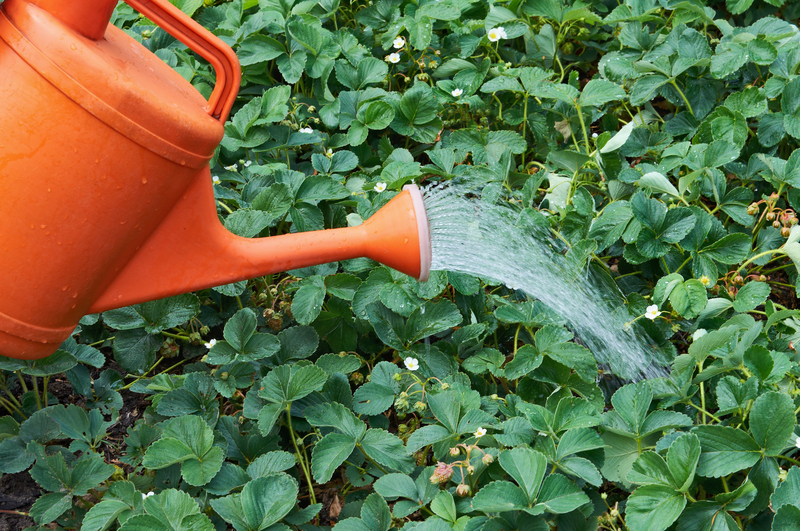Bracing Your Garden for Winter: Plant Protection
Posted on 15/09/2025
Bracing Your Garden for Winter: Plant Protection
As the warm days of summer wane and the chill of autumn deepens, dedicated gardeners start preparing for the inevitable arrival of winter. Protecting your plants during the colder months can mean the difference between a thriving spring garden and expensive replacement come thaw. In this comprehensive guide, we'll explore expert strategies for bracing your garden for winter, with a focus on effective plant protection methods.

Why is Winter Plant Protection Essential?
Understanding the risks your garden faces during winter helps underscore the importance of winter plant protection. Colder temperatures, frost, freezing winds, and heavy snow can all damage or kill unprotected plants. Even hardy species can suffer from root damage, desiccation, or disease if left exposed.
- Temperature Fluctuations: Sudden drops or rises add stress to plant tissues.
- Soil Freezing: Extremes can disrupt root systems and halt nutrient uptake.
- Dehydration: Cold winds can dry out plants, even when soil moisture seems sufficient.
- Pest and Disease Risk: Some pests and fungal spores overwinter in debris.
By proactively bracing your garden for winter, you're shielding your investment and ensuring a lush landscape when spring returns.
Assessing Your Garden's Winter Vulnerabilities
Before estimating what protection is required, take stock of your unique garden. Every plot has microclimates, plant combinations, and exposures that demand specific approaches for effective plant protection in winter.
Identify Tender and At-Risk Plants
- Annuals, such as impatiens and petunias, rarely survive frost; plan to remove or replace them.
- Tender perennials like dahlias and cannas often need digging up or extra mulch.
- Shrubs newly established (less than two years) are especially vulnerable.
Survey Your Garden's Microclimates
- Note low-lying areas where cold air collects, and higher ground where wind exposure is greatest.
- Observe where snow drifts tend to accumulate or where it melts quickly.
- South or west-facing beds may experience more temperature fluctuations.
Top Techniques for Plant Protection in Winter
With assessment complete, it's time to implement proven methods for winterizing your garden. From mulching to physical barriers, these techniques help brace your garden for winter with confidence.
1. Mulching: The Garden's Winter Blanket
Mulch acts as insulation, stabilizing soil moisture and temperatures. Lay it down after the first cold spell, when the soil is still moist but no longer warm.
- Organic Mulch: Wood chips, straw, leaves, and compost add nutrients as they break down.
- Inorganic Mulch: Gravel or landscape fabric for areas needing less frequent renewal.
Apply a two- to four-inch layer around root zones, leaving a gap at the stem or trunk to prevent rot. For added durability, replenish mulch mid-winter if storms displace your first layer.
2. Row Covers and Cloches: Physical Plant Protection
To safeguard sensitive plants from harsh frost and wind, use row covers or cloches. These structures trap ground heat and shield foliage without suffocating it.
- Floating Row Covers: Lightweight fabrics drape over plants, ideal for beds of vegetables or annuals.
- Garden Cloches: Glass or plastic domes--great for individual plants or small clusters.
- Cold Frames: Mini-greenhouses extend the season for hardy greens and starts.
Make sure to ventilate covers on sunny days to avoid overheating.
3. Windbreaks and Barriers
Winter winds can be devastating for exposed gardens. Erect windbreaks to reduce wind speed and desiccation.
- Temporary burlap screens around beds or prized shrubs.
- Snow fencing set up perpendicular to prevailing winds.
- Living windbreaks, like rows of evergreen trees, for long-term shelter.
Focus on shielding young trees, broad-leaf evergreens, and roses.
4. Protecting Container Plants
Potted plants suffer more in winter, as their roots are surrounded by less insulating soil.
- Cluster containers together in a sheltered spot.
- Wrap pots in bubble wrap or burlap for extra insulation.
- Elevate pots off concrete to prevent freezing from the bottom up.
Alternatively, move containers into an unheated garage, shed, or cold frame for the duration of winter.
5. Correct Watering for Winter Plant Protection
Overly dry soil increases risks of root damage, especially for evergreens. Water thoroughly before the ground freezes fully. Afterward, water only on mild days if the soil is dry and plants show signs of stress.
Special Considerations: Trees, Shrubs, and Perennials
Larger woody plants require specific care when bracing your garden for winter. Here's how to keep them safe:
Wrapping Trees and Shrubs
- Young or thin-barked trees are susceptible to sunscald and frost cracks; wrap trunks with tree wrap or burlap.
- Broadleaf evergreens may benefit from anti-desiccant sprays or windbreak screens.
- Mound extra soil or mulch around the base of roses ("hilling") to protect graft unions.
Staking and Pruning
Heavy snow and ice accumulation can break branches. Stake fragile stems and gently tie together multi-stemmed shrubs to prevent splitting. Late autumn is generally not the time for heavy pruning, but do remove dead or diseased wood to minimize overwintering pests.
Keeping Pests and Diseases in Check Through Winter
Many garden pests, such as aphids and spider mites, as well as fungal pathogens, overwinter in leaf litter and plant debris. Keeping your garden tidy is one of the most effective plant protection strategies during winter.
- Remove fallen leaves and annual stems.
- Dispose of diseased material--do not compost infected foliage or stems.
- Clean and disinfect garden tools before storing for winter.
Planning Ahead for Spring Success
Proper winter plant protection isn't just about surviving the cold--it's about setting your garden up for a robust, early start come spring.
Monitor Through Winter
- Check mulch regularly, particularly after storms, and replenish as needed.
- Brush heavy snow off shrubs and evergreens using a broom (never shake branches as this can snap brittle wood).
- Inspect rodent guards and barrier materials to ensure they're intact.
Plan Next Year's Improvements
As winter progresses, note which protection methods were most effective or which areas suffered. This is the perfect time to map out new windbreaks, identify where additional mulch or hardy shrubs are needed, and order supplies for next year's protection.
Common Mistakes in Garden Winterizing--and How to Avoid Them
Many gardeners unintentionally undermine their efforts with a few classic mistakes. Here are pitfalls to watch out for:
- Applying Mulch Too Early or Too Late: Premature mulching attracts rodents or may lead to rot; too late and plants may have already suffered cold damage.
- Suffocating Plants with Plastic: Plastic sheeting can trap moisture and lead to disease; use breathable fabric or raised covers.
- Neglecting Watering: Even dormant plants need moisture; don't forget about watering until the ground freezes solid.
- Improper Pruning: Heavy pruning encourages tender new growth near winter's end, which is easily damaged.

Eco-Friendly and Sustainable Winter Plant Protection
For those looking to brace their gardens for winter in an environmentally conscious way, consider sustainable methods:
- Use natural mulches like shredded leaves or straw to enrich the soil.
- Repurpose materials--old sheets, blankets, or burlap sacks make excellent row covers.
- Plant native evergreens as living windbreaks and avoid chemical anti-desiccants where possible.
- Compost removed plant debris that isn't diseased.
Sustainable strategies not only protect your plants but also enrich your garden's ecosystem for years to come.
Conclusion: Bracing Your Garden for Winter with Confidence
The transition into the cold season is a true test for any garden, but with careful preparation and smart, sustainable strategies, you can safeguard your plants and ensure their health year-round. Bracing your garden for winter with proper plant protection practices isn't just an investment in your landscape--it's a commitment to beauty, productivity, and sustainability in every season.
Start now--walk your garden, assess each plant's needs, gather your supplies, and take action. When spring returns, bursting forth in a riot of color and new growth, you'll be glad you took the time to prepare.

